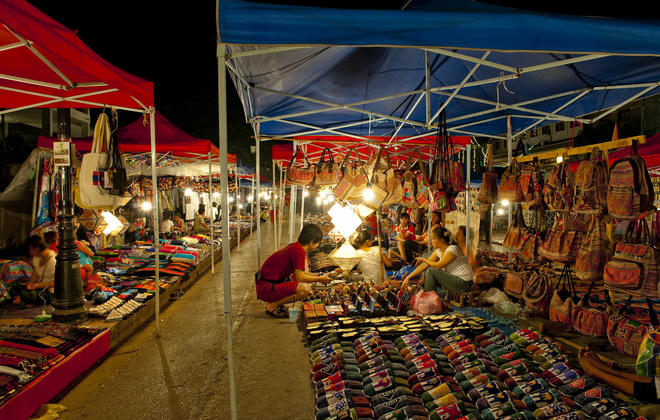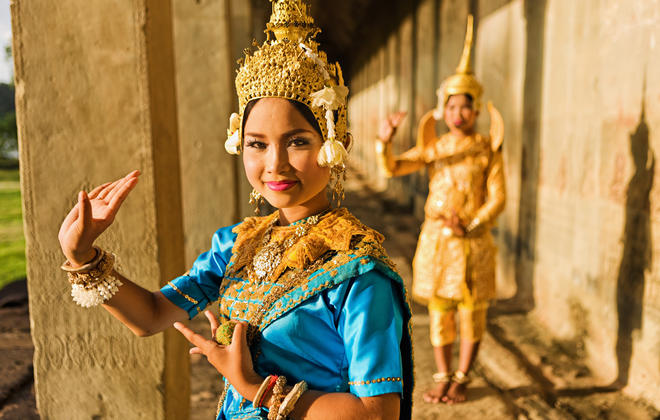Wedged between a number of larger neighbouring countries, Laos is often overlooked in favour of tourism giants such as Thailand and Vietnam. But these travellers are missing out on an extraordinarily scenic and culturally rich destination. Laos boasts a reputation as the least visited, least Westernised, and most untouched of all Indochinese nations. Only time will tell how long this will last, but while it does, visitors who choose to explore this nation’s remote areas will be richly rewarded. Laos’ primary drawcard is undoubtedly the mighty Mekong River which traverses the length of the country and is considered the second most biodiverse river in the world. In the north, the landscape is characterised by little-explored jungle-clad mountainous areas where visitors can witness the intriguing cultures of the various hill tribes that populate this region. Travellers on the hunt for cultural interest should head for the bustling capital of Vientiane, with its innumerable temples and Buddhist monuments. It is this variety of exotic wildlife, remote wilderness and remarkable cultural treasures that make Laos a truly unique and unforgettable holiday destination.
A charming town with elegant historical architecture and a distinctly French flavour, Luang Prabang in northern Laos is filled with interesting museums, bustling markets and traditional shops. 33 Buddhist temples dot the city.; the Haw Kham Royal Palace Museum and Wat Xieng Thong temple give travellers some background on and history of the Laotian people. Beyond the city, breathtaking nature and ancient sites await. Those who visit the Pak Ou Caves can see hundreds of Buddha statues accumulated there through the ages. The 180-foot Kuang Si Waterfalls, an hour’s drive out of the city, is one of the region’s natural highlights, with its layer upon cascading layer of turquoise pools and torrents.





Since reopening to tourists in the early 1990s, Cambodia has captivated visitors from around the globe with its rich cultural heritage, warm and welcoming people, and extraordinary natural wonders. Phnom Penh, the nation’s vibrant capital, pulses with energy, offering world-class dining, lively markets, and a spirited nightlife. Yet the country’s true treasures lie beyond the city: the sleepy, French-influenced town of Kampot enchants with its riverside promenade, colonial villas, and charming cafés; the lush, jungle-clad Cardamom Mountains reveal spectacular waterfalls and pristine wilderness; and, of course, the majestic Angkor Wat complex stands as the world’s largest and most breathtaking religious monument. Cambodia seamlessly caters to every traveller, whether seeking exhilarating jungle adventures, serene golden-sand beaches, luxurious resorts, or a journey through its tantalising local cuisine. With its blend of history, nature, and culture, Cambodia remains a destination of endless discovery and wonder.
Best known as the gateway to the awe-inspiring Angkor Wat temple complex, Siem Reap is a charming town blending French colonial and Chinese architectural influences with a relaxed, welcoming atmosphere. Its crown jewel, the Angkor complex, spans an area larger than Paris and is a labyrinth of intricately carved temples adorned with dancing apsaras, lotus motifs, and five-headed naga (serpent deities). Abandoned for centuries and rediscovered in 1860 by French explorer Henri Mahout, it has since become Cambodia’s cultural and historical highlight. Beyond the temples, Siem Reap offers a vibrant arts and crafts scene, immersive cultural villages that showcase traditional rural life, and a bird sanctuary on the town’s outskirts, providing visitors with a rich mix of heritage, nature, and local culture.





Situated at the confluence of the Mekong and Tonle Sap rivers, Phnom Penh, Cambodia’s vibrant capital, captivates with its rich history, welcoming locals, and thriving culinary scene. The city’s heritage is immediately evident: the National Museum of Cambodia showcases over a millennium of Khmer art and design, while the monumental Royal Palace—home to King Sihamoni—features the iconic Throne Hall and the dazzling Silver Pagoda, whose floor gleams with five tons of silver. Along the Tonle Sap riverfront, visitors can enjoy refined dining and French-inspired wines, a legacy of the city’s colonial past, while the evenings come alive with lively nightclubs, karaoke performances, and stage shows. Combining culture, history, and cosmopolitan energy, Phnom Penh offers a dynamic and immersive Cambodian experience.











